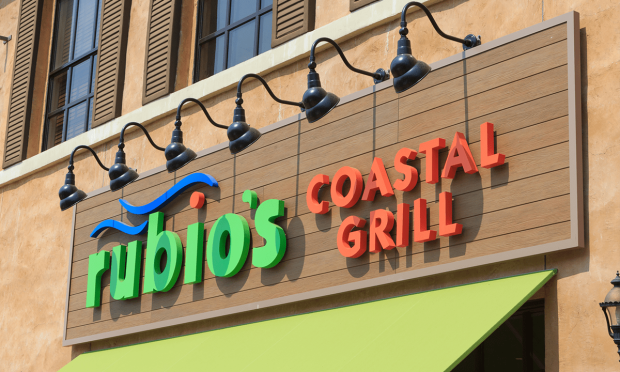Restaurants Drive Loyalty Program Engagement by Putting Customers in Control

As restaurant brands look to boost consumers’ engagement, some are finding that the way to keep customers coming back is by putting them in charge of their own loyalty rewards.
Fast-casual brand Rubio’s Restaurants, for one, which has more than 150 restaurants across California, Nevada and Arizona, announced last week (Aug. 24) the launch of a new loyalty program, one that swaps out the surprise-and-delight-based offering with a program focused on giving users visibility and choice. Rubio’s Director of Loyalty & Digital Experience Adam Fox spoke with PYMNTS about how these changes can drive purchase frequency in the face of rising food prices.
“The reason we went with this type of program is listening to our guests,” he said. “They wanted a program where they can redeem for what they wanted to. So, this just gives our guests so much choice and flexibility whether they want to save up for free entrees or if they want if they want to feed their kids for free. Especially in this time of inflation, we feel like it’s a great … way to provide value to our guests.”
Additionally, the brand found that, with previous the previous loyalty program, consumers’ lack of understanding of “what they were earning or how they were earning” kept them from taking the extra step to check in when they got to the restaurant, such that the brand registered certain customers as lapsed when in fact they were remaining engaged.
A large share of consumers engages with restaurant loyalty programs, according to data from PYMNTS’ February/March study “Digital Divide: Restaurant Subscribers And Loyalty Programs.” The study, which drew from a census-balanced survey of more than 2,000 U.S. adults who regularly purchase food from restaurants conducted in December, found that 44% of consumers use loyalty programs at full-service restaurants (FSRs), and 38% do so at quick-service restaurants (QSRs).
Read more: Four in 10 Consumers Open to Restaurant Subscription Services
To Each Their Own
It is worth noting that, as some restaurants see success in putting users in the driver’s seat, others have found that the most effective strategy for their brand and for their customers is gamifying their loyalty programs with surprise and delight.
Take, for instance, Austin, Texas-based brand Torchy’s Tacos, which has 100 locations across 11 states. The brand announced the launch of a rewards program earlier this year that offers surprise rewards that members cannot anticipate or control.
See also: Restaurants Roll out Loyalty Offerings Beyond the Points-per-Dollar Standard
Meanwhile, CKE Restaurants, the parent company of quick-service chains Hardee’s and Carl’s Jr., which has nearly 4,000 restaurants around the world, has concluded that its best bet is balancing these two models, combining a tiered points-per-dollar rewards structure with periodic moments of surprise and delight.
“I think in loyalty overall, part of what is exciting about it is you can have the predictability but also take the opportunity for some surprise fun along the way,” CKE Restaurants Chief Brand Officer Chad Crawford told PYMNTS in a March interview.
Related news: QSR Chains Combine Predictable Loyalty Rewards With Intermittent Surprises to Drive Engagement
The Subscription Balance
As brands look to distinguish between the loyalty strategies worth their investment and those that might not yield the desired results, Fox argues that subscriptions may fall into the latter bucket for brands that are not in high-frequency categories.
He noted that, for restaurant aggregators like DoorDash, which get orders “several times a month,” or for companies “in the coffee space,” where customers come back on a regular basis, the model makes “a lot of sense,” but he is not convinced that subscription models for other categories are at a point yet where they make economic sense.
“With brands with much lower frequency, I think the subscription game is something that we collectively haven’t figured out just yet,” Fox said.
The same February/March Digital Divide study found that, while many consumers are open to restaurant subscriptions, the majority are not. Specifically, 58% of those surveyed reported that they are just slightly interested or not interested at all in participating in restaurant subscription programs. In contrast, 17% said they were “very” or “extremely” interested in being provided a restaurant subscription service.
The Next Steps
Looking ahead, one of Fox’s goals for the program is to boost its ability to leverage data to personalize the user experience and to enable the brand to better influence customer behavior. For instance, he noted that the system today may view a three-week lapse the same way whether a customer is typically a once-a-week user or typically a once-a-month user. The aim is to understand these purchasing behaviors in the context of previous behaviors and message accordingly.
Another goal is to improve the payment process going forward.
“How can we make the authentication process and the checkout process more seamless and reduce friction for the guest, whether that is a single tap for rewards and payment or being able to authenticate on a touchpad or with a single scan?” Fox said. “I think that’s an opportunity that a lot of brands are going to continue to look to.”
